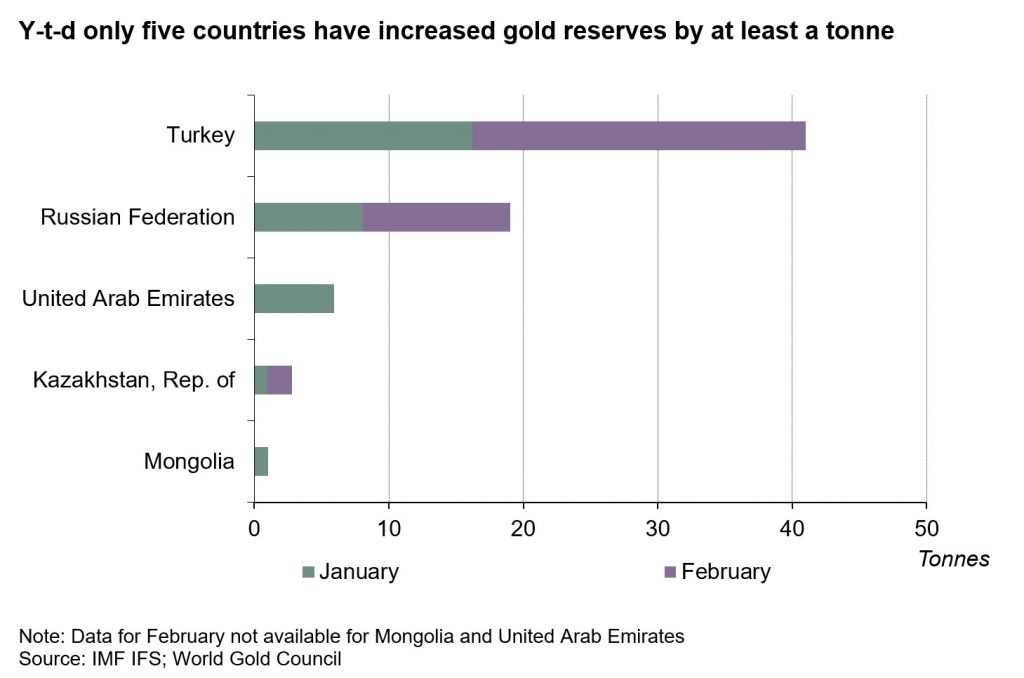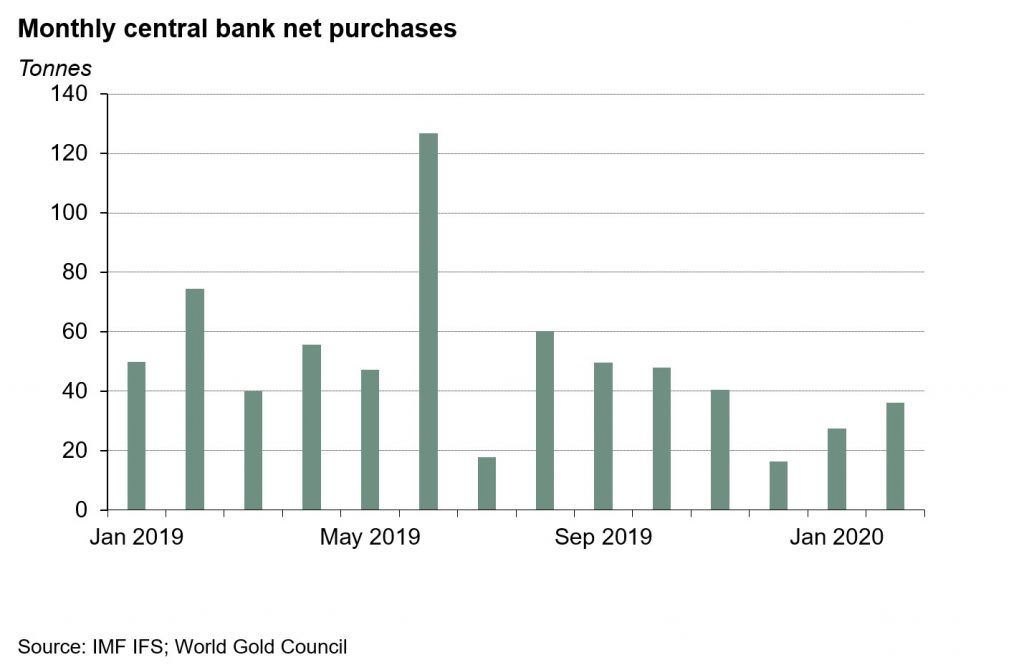The latest data from the World Gold Council (WGC) shows that central banks’ monthly net gold purchases increased in both January and February, following December’s five-month low.
In February, central banks around the globe bought a net 36 tonnes (t) of gold, almost a third higher than January’s net purchases, but still 52% lower year-over-year. This brings year-to-date net purchases to 64.5t, down 44% compared to the 116.1t of net purchases over the first two months of 2019.
Breaking down February’s net total into its component gross purchases (39.1t) and sales (3.1t) shows that purchases remain healthy and sales remain low, the Council stated.
Of the central banks which have reported their gold reserves at the end of February, Turkey (24.8t), Russia (10.9t), Kazakhstan (1.8t) and Qatar (1.6t) were the only noteworthy buyers during the month. Meanwhile, Uzbekistan (3.1t) was the only significant seller.
So far this year, only five central banks have increased gold reserves by at least a tonne, compared with eight over the first two months of 2019. The five countries are Turkey (41t), Russia (19t), the United Arab Emirates (5.9t), Kazakhstan (2.8t) and Mongolia (1t).

“The past two months clearly suggest gold continues to be an important component of foreign reserves despite heightened levels of demand in recent years,” WGC market intelligence manager Krishan Gopaul stated.
However, he also warned that the recent market instability and uncertainty will still be at the forefront of central bankers’ mind for the rest of this year. Earlier this week, Russia’s central bank, the biggest buyer of recent years, announced it would stop buying gold starting April 1, 2020.
“Nonetheless, we will have to wait and see how this impacts their outlook in the coming months,” he added.

While the Council believes central banks will remain net buyers in 2020, there is a possibility that we may not see as much buying as we did over the past two years.
